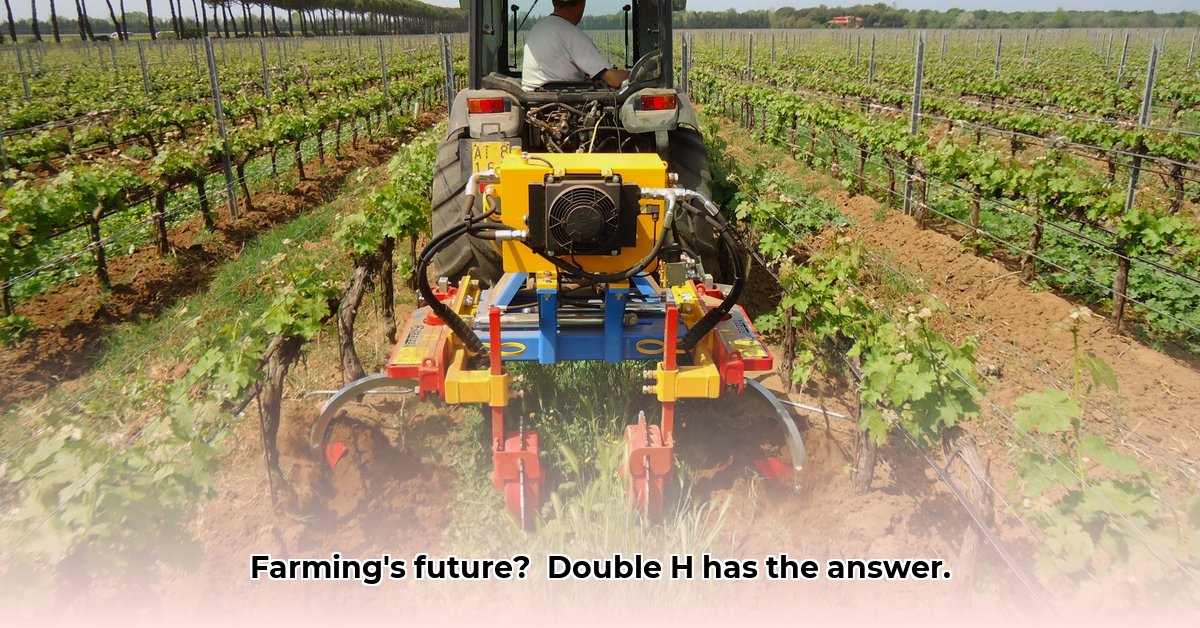
A Legacy of Quality and Sustainable Farming
For five decades, Double H Tractor has been a quiet force in sustainable agriculture, focusing on the essential components that keep farms running smoothly. Their success stems not from flashy new technology, but from a steadfast commitment to high-quality, dependable parts – a commitment reflected in every detail, from the precision engineering of their products to their ethical employment practices. This case study explores Double H's history, its dedication to sustainable practices, and the challenges and opportunities it faces in a rapidly evolving agricultural landscape. Learn more about electric tractors and their role in sustainable farming here.
How has Double H Tractor managed to maintain its position as a key player in the agricultural equipment market for over 50 years? Is their dedication to sustainability simply a matter of public relations, or is it deeply embedded in their business model?
More Than Just Reliable Parts: A History of Precision Engineering
Double H Tractor's reputation is built on dependability. Their focus isn't on mass production; instead, they meticulously craft essential components for farm machinery. This specialization allows for expertise and efficiency, resulting in superior products. The attention to detail exhibited in even the smallest parts, like their plastisol-coated hitchpins, highlights their dedication to quality. This isn't simply about manufacturing; it's about precision engineering.
Ethical Practices: A Foundation of Sustainability
Double H's commitment extends beyond product quality. Their inclusive hiring practices, prioritizing individuals with disabilities, represent a significant social responsibility initiative. This commitment underscores their values and contributes to a strong, loyal workforce – a testament to their understanding that ethical practices are not only morally right but also good for business. This humane approach enhances their brand reputation and strengthens their position in a market increasingly focused on ESG (Environmental, Social, and Governance) factors.
Navigating the Future: Challenges and Opportunities
While Double H boasts a strong reputation, transparency is needed. More detailed public information regarding their market share, long-term growth strategies, and comprehensive sustainability goals (including sustainable material sourcing, waste reduction, and circular economy initiatives) is crucial for a more complete evaluation.
A Roadmap for Growth and Sustainable Practices
Double H’s continued success requires a strategic plan encompassing:
Comprehensive Market Research: Understanding current and future market demands is paramount for informed decision-making.
Product Line Expansion & Innovation: Expanding into related agricultural components and exploring sustainable materials will broaden market reach.
Robust R&D Investment: Investing in R&D is crucial for process optimization, product improvement, and the development of environmentally friendly solutions.
Supply Chain Optimization: A thorough evaluation of the supply chain will identify opportunities for sustainable sourcing, waste reduction, and ethical supplier practices.
Transparent Communication: Openly reporting on sustainability goals and progress builds investor and consumer confidence.
Collaboration for a Sustainable Future
Success requires collaboration. OEMs benefit from Double H's high-quality components. Investors recognize the long-term value of a company committed to ethical practices and sustainability. Farmers and consumers support companies reducing environmental impact. This collaborative approach is essential for the success of Double H and the broader agricultural sector.
Evaluating Risks and Mitigating Potential Threats
A risk assessment helps maintain long-term viability:
| Risk Factor | Likelihood | Impact | Mitigation Strategies |
|---|---|---|---|
| Technological Disruption | Medium | High | Continuous R&D investment, agile manufacturing, product diversification |
| Supply Chain Disruptions | Medium | Medium | Supplier diversification, long-term contracts, exploration of local sourcing |
| Competition | Low | Medium | Focus on superior quality, niche expertise, strong brand building |
| Reputational Risk (ESG concerns) | Low | High | Proactive ESG management, robust sustainability initiatives, transparent reporting |
| Regulatory Changes | Low | Medium | Close monitoring of regulatory changes and adaptation of processes |
Key Takeaways: A Case Study in Sustainable Innovation
- Reduced Carbon Footprint: Double H has significantly reduced its environmental impact by switching to renewable energy sources in its manufacturing facilities.
- Sustainable Tractor Design: Improvements in fuel economy and exploration of alternative fuels demonstrate a commitment to responsible manufacturing.
- Precision Farming Technologies: The use of GPS-guided planting and automated spraying optimizes resource use, reducing environmental impact.
- Extended Tractor Lifespan: Focus on durable components and repair/refurbishment programs reduces the demand for new production.
Double H’s journey highlights the importance of focusing on specialization, sustainable business practices, and collaborative partnerships in building a viable and sustainable future for agriculture. Continuous adaptation to the evolving agricultural landscape is crucial, and further detailed study of their long-term strategies will further illuminate their path to success.